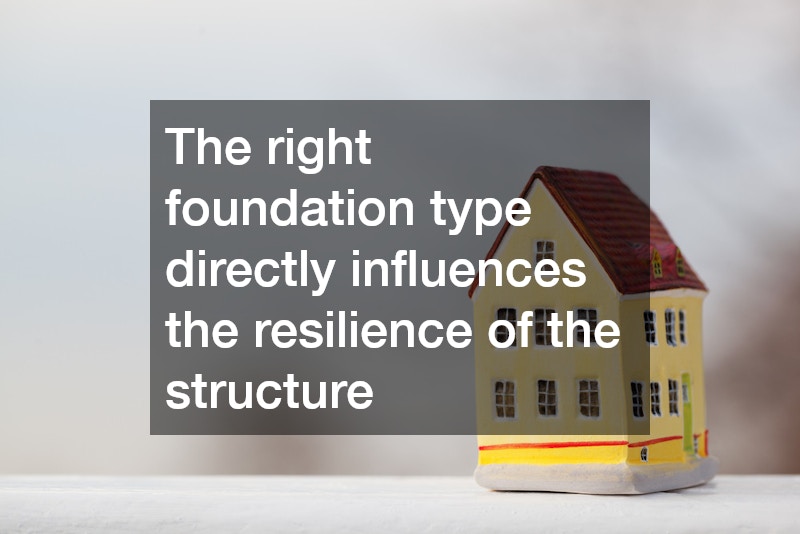The foundation of a home acts as its bedrock, both literally and figuratively, and it begins with foundation design. A well-designed foundation is paramount for the safety and durability of not just the structure but also its inhabitants. Neglecting foundation design can lead to catastrophic structural failures, making it an essential consideration in home construction.
A strong home begins with a solid foundation. The design of a home’s foundation is one of the most critical elements in residential construction, as it supports the entire structure above and ensures long-term stability. Proper foundation design takes into account soil conditions, load-bearing requirements, drainage, and environmental factors to prevent issues such as settling, cracking, or water damage. When done correctly, it not only enhances the home’s safety but also protects its value and longevity. Understanding the importance of home foundation design helps homeowners and builders appreciate how careful planning and professional engineering create a durable base that stands the test of time.
Delve into various aspects of foundation design, focusing on why it is crucial for homeowners to prioritize secure design practices. A solid foundation will give homeowners peace of mind as they enjoy a safe living environment, and aid in establishing an appreciation of the elements of solid foundation design.
Foundation Design and Its Importance
Foundation design is the process of evaluating the ground conditions and selecting the appropriate construction methods to create a stable base for a structure. It involves careful analysis and engineering to ensure that the weight of the building is evenly distributed across the soil beneath it. Without proper foundation design, buildings can settle unevenly, leading to structural cracks and eventual failure.
In many areas, including densely populated regions, the variations in soil type and climate conditions make tailored foundation design even more important. The right foundation type directly influences the resilience of the structure against environmental stresses, ensuring that it stands the test of time.
Common Design Types
Common types of foundations include pier and beam foundations, slab foundations, and basement foundations. Each type serves different purposes and is chosen based on factors like soil conditions, the weight of the structure, and local building codes. Pier and beam foundations elevate the structure above the ground, providing better ventilation and access to plumbing, while slab foundations offer a more straightforward construction method.
Basement foundations provide additional living space and can add significant value to the home, although they require careful consideration of waterproofing and drainage. Choosing the right foundation design tailored to the specific requirements of the home can mitigate future issues and contribute to a secure investment.
Soil and Foundation Design
The soil type beneath a home greatly influences foundation design choices. For instance, clay soils can expand and contract with moisture changes, creating potential challenges for foundation stability. Conversely, sandy soils may not provide enough support for heavy structures, leading to the need for deeper footings or specialized foundation types.
Engineers must conduct soil tests to assess the bearing capacity and characteristics of the soil before finalizing the foundation design. In urban environments where geological conditions can vary widely, understanding these differences can help in selecting the most appropriate and secure foundation design.
Signs of Foundation Issues
Homeowners should be vigilant in watching for signs of foundation issues, which may manifest as cracks in walls or floors, doors that stick or fail to close properly, and uneven flooring surfaces. These indicators can signify that the foundation is shifting or settling unevenly, which can compromise the structural integrity of the home.
Early detection of foundation issues is key to preventing more severe damage down the line. Homeowners should conduct regular inspections and consult with professionals if they notice any troubling signs, especially in regions where soil conditions can change rapidly due to seasonal rains or droughts.
Steps to Ensure a Secure Foundation
To ensure a secure foundation design, begin with thorough site assessments and engage with qualified engineers or foundation specialists. They can provide insights into the appropriate foundation type based on soil tests and environmental conditions. It is crucial to incorporate local expertise to navigate unique challenges.
Additionally, investing in quality construction materials and adhering to building codes can significantly enhance the durability and stability of the foundation. Homeowners should ask questions and request information about the foundation design process to ensure they are making informed decisions.
The foundation is a vital element that underpins the integrity of a home. A secure foundation design is not just a theoretical concept; it is a practical necessity for ensuring safety and longevity. Homeowners should prioritize foundation design and consult professionals to make informed decisions.
By taking the time to understand and invest in secure foundation practices, homeowners can safeguard their properties against future issues and ensure a stable and durable living environment. This not only prevents future stress, but also allows homeowners to cultivate an appreciation for the foundation of their home.

